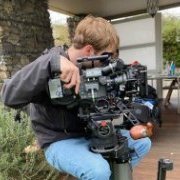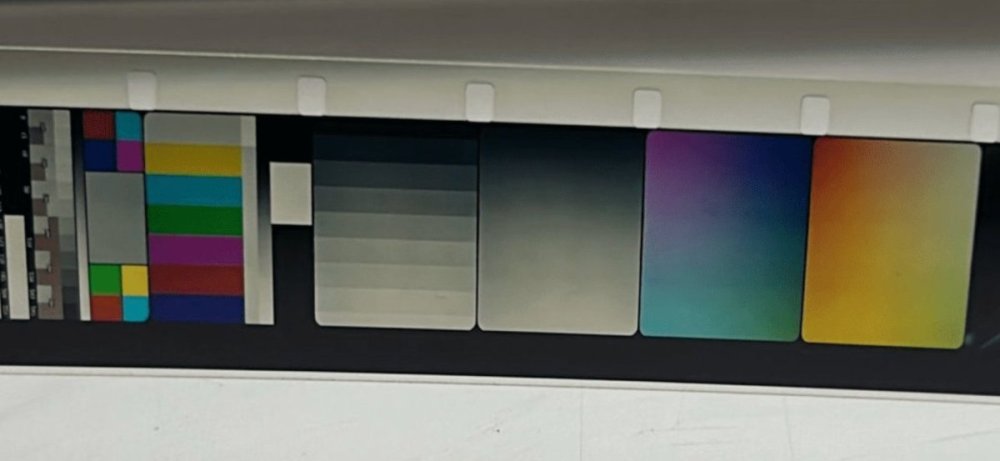
Ludwig Hagelstein
Basic Member-
Posts
84 -
Joined
-
Last visited
Profile Information
-
Occupation
Industry Rep
-
Location
Berlin
Recent Profile Visitors
6,735 profile views
-
Goodbye remjet, hello AHU?!
Ludwig Hagelstein replied to Joerg Polzfusz's topic in Film Stocks & Processing
From experience of having processed and scanned a feature and multiple commercials now on AHU 16 and 35mm stock I can guarantee you all the fear with pressure plates and halation is waaaaay overcooked. We did not encounter any issues. The only thing you'll notice is that the film is cleaner. That's it. There is really no reason to be afraid. -
Ludwig Hagelstein started following Which labs do E-6 development for 35mm film?
-
Which labs do E-6 development for 35mm film?
Ludwig Hagelstein replied to Owen A. Davies's topic in Film Stocks & Processing
The only other lab in the world that does proper 35mm Cine E6 is Andec Cinegrell in Berlin. They did Poor Things, for example. You can have a look here: https://www.andecfilm.de/en/ektachrome Everyone else just does cross processing. Here's a Lufthansa commercial shot by Max Pittner on 35mm 8-Perf VistaVision Ektachrome, all done in Berlin:- 8 replies
-
- 3
-

-

-
- development
- laboratory
-
(and 2 more)
Tagged with:
-
-
it wildly depends on where it was scanned and which pipeline they used. Log Scans from the Scanity dont have a color space per se - there are different logarithmisation options with Scanity, one is called CPD-K, the other is called CPD. When you work with the CPD-K curve in a 10 Bit setting, you get a Cineon Log approximation, but alas, the resulting .dpx dont have a color space - you have to assign it in postpro. If your posthouse did a clean transcode of the .dpxs to ProRes without doing a color transform, then you should be able to assign any working space you want - also, dont mess around with cineon log luts.
-
16mm negative cutting in Europe?
Ludwig Hagelstein replied to Graham Ellard's topic in Post Production
Cinegrell in Berlin offer Neg Cutting as well, through Monika Dörge. -
B&H arbitrarily adds markup. By through Kodak directly, here are transparent prices: https://www.kodak.com/content/products-brochures/Film/Kodak-Motion-Picture-Products-Price-Catalog-US.pdf
-
I think he does from what I know.
-
yes that is absolutely true - a color chart is always a useful reference. I was just making the point that during the actual ingest of the scan, the color will not be corrected as that is a creative decision while working with the log scans. The scan itself is supposed to acquire the best possible data, and at that stage, no intervention regarding color bias is supposed to happen. What happens in dailies grading or finishing is an entirely different story, of course.
-
the advice regarding the color cast is more valid for a classic telecine approach, or for analog rushes printing. Not so much for finishing scanning or a scan once workflow, where you directly scan at maximum resolution / bit depth and then the colorist can make whatever decision he / she intends to.
-
a good log Scan will have a neutral black at around 10% on the Scopes, but color temperature is usually not corrected, as during the scan, no creative decisions are being made - that is up to the colorist. Once you receive a scan that neither crushes the blacks, nor clips the whites, you can work in grading to achieve whatever look you desire. Re Pull: I wouldnt go down to 64, but between EI 100 and EI 80 there is not so much difference I think. In brightly lit scenes, go for 100, and in scenes with less light, expose a bit more I'd say
-
Well there are a few options - DeJonghe, Haghefilm, Transperfect, Silverway, Augustus, and of course Cinegrell in Berlin - the sample I posted above is from there too. You'll definitely get the best scans there - all others do 10 Bit, at Cinegrell you'll always get 16Bit from Scanity, or Arriscan if you choose so, no extra charge for uploads, and same day delivery if the film arrives until 10 in the morning at the lab. But for transparency, I'm biased towards Berlin, as I work there. All options are good, and if you're in Europe, don't go over the hassle and deal with Brexit uncertainties and possible x-ray hazard in shipping just to get film to the UK. There is plenty infrastructure on the continent, too.



